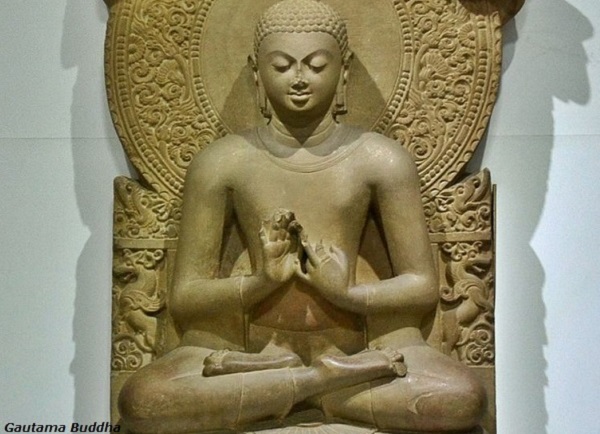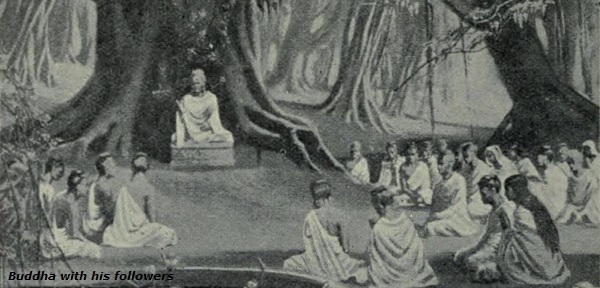
- Ancient Indian History - Home
- Study of Indian History
- Writing of Ancient Indian History
- Imperialist Historiography
- Historiography Nationalist Approach
- Marxist School of History
- Sources of Ancient Indian History
- Archaeological Sources
- Geographical Background
- Geography in Ancient Literature
- Stone Age Cultures
- Mesolithic Culture
- The Neolithic Age
- Chalcolithic Period of India
- Chalcolithic Culture In India
- Harappan Civilization
- Harappan Town Planning
- Harappan Crafts & Industries
- Harappan Culture
- Harappan Religion
- Harappan Chronology
- Vedic Civilization
- Vedic Society
- Vedic Politics
- Vedic Religion & Philosophy
- The Aryan Invasion
- Later Vedic Age
- Social System after Vedic Age
- Achievements of Indian Philosophy
- Evolution of Jainism
- Evolution of Buddhism
- Alexander’s Campaign in India
- Maurya Dynasty
- Kalinga War & its Impact
- Society & Economy during Mauryas
- Mauryan Governance
- Early History of South India
- Age of Smaller Dynasties
- Literature of Satavahana Period
- Society of Satavahana Period
- Economy of Satavahana Period
- Technology of Satavahana Period
- Chola Dynasty
- Pandya Dynasty
- Chera Dynasty
- Period of Foreign Invaders
- Gupta Period
- Decline of Guptas
- Governance of Gupta Period
- Literature of Gupta Period
- Economy in Gupta Period
- Science & Tech of Gupta Period
- India after the Gupta Period
- Period of Harsha
- South India during the Harsha Period
- Kadamba Dynasty
- History of Kamarupa
- India after Harsha
- Gurjara Pratiharas
- Palas of Bengal
- Rashtrakutas of Deccan
- Literature after the Harsha Period
- Society after the Harsha Period
- Economy after the Harsha Period
- Religion after the Harsha Period
- References & Disclaimer
Evolution of Buddhism
Buddhism was founded by Gautama in 566 B.C. He was the son of Suddhodhan and Mayadevi. His father Suddhodhan was the eminent king of Sakya republic.

An astrologer predicted about Gautama that he would either be chakravartin-samrat (a great king) or a great sanyasin (a great monk).
Gautama was married to Yasodhara at an early age. Gautama was shocked at the sight of an old man, a diseased person, a dead body. Thereafter, he was attracted by the saintly appearance of an ascetic. One night he renounced the worldly life and left his home, wife, and son.
After leaving home, Gautama studied for some time in the philosophical schools of two renowned teachers. Thereafter, six years of profound meditation led to the discovery of truths. Gautama became the Buddha i.e. the enlightened one.
-
The main principle of Buddha's teachings is represented by the Four Noble Truths (Arya-Satyas) as −
Dukkha (the world is full of sorrow)
Dukkha Samuddaya (that causes the sorrow)
Dukkha Nirodha (sorrow can be stopped)
Dukkha Nirodhagamini-pratipada (path leading to cessation of sorrow)
Teachings of Buddha
Desire is the root of all human sadness and the assured way of ending unhappiness was the elimination of desire.
Death is certain and there is no escape from it which lead to rebirth and caused further suffering. One could get out of this chain of suffering by attaining Nirvana (salvation).
-
To achieve the final salvation (Nirvana) Buddha suggest Ashtangika marga (the eight-fold path). These eight fold paths are −
Right speech,
Right action,
Right means of livelihood,
Right exertion,
Right mindfulness,
Right meditation,
Right resolution, and
Right view.

The ultimate aim of life is to attain Nirvana, which means freedom, from further birth and death.
Nirvana is the eternal state of peace and bliss or liberation from the cycle of birth and death
-
Buddha had summarized the whole process in three words viz.
Seela (Right conduct),
Samadhi (Right concentration), and
Prajna (Right knowledge).
According to Buddha, Seela and Samadhi lead to Prajna, which is the direct cause of nirvana.
Buddha advocated "The Middle Path" in which extremes are avoided.
Buddha visited to the Deer Park (modern Sarnath), Kasi after his enlightenment and gave his first Sermon (lecture).
His first sermon was known as "Set in Motion, the Wheel of Law".
-
According to Buddha s moral doctrine −
Man is an arbiter of his own destiny and not any God or Gods.
If a man does good deeds in his life, he will be reborn in a higher life and so on till he attains the Nirvana and finally gets freedom from the evils of birth.
If a man does evil deeds, he will surely to be punished and the man will be reborn into lower and lower life, each life taking him further away from the Nirvana.
The middle path was the best and man should avoid both extremes, viz. a life of comforts and luxury, and a life of severe asceticism.
Buddhism laid great stress on love, compassion, equanimity, and non-injury to the living creatures in thought, word, and deed.
Buddhism rejected the necessity of Vedic rituals and practices for the purpose of salvation, and the superiority assumed by the Brahmans.
-
The followers of the Buddha fell into two categories −
Upasakas i.e. the lay followers who lived with family; and
Bhikshus i.e. monks who renounced the world and led the life of an ascetic.
Bhikshus lived as a commune called Sangha founded by Buddha himself. In Buddhism, all the followers enjoyed equal rights irrespective of their Varna and Jati.
Women were also allowed to join the Sangha and were known as Bhikshunis.
Buddha debated in the language of the common people.
Buddha and his followers used to travel from place to place, and preach for eight months in a year; and, four months, during the rainy season, they stayed at one place.
Buddha died in the year 486 B.C. at Kushinagar at the age of 80.
The ashes of Buddha after cremation were distributed among his followers.
The followers kept these ashes in caskets and built Stupas over them. One example of such Stupa is Sanchi Stupa.
Jainism vs. Buddhism
-
Following are the key similarities in the philosophies of Jainism and Buddhism −
Both the philosophies recognize the fact that the world is full of sorrows and the salvation of a man means his deliverance from the eternal chain of birth and death.
Both the philosophies derived their basic principles from the Upanishads.
Both the philosophies did not accept the idea of God.
Both the philosophies laid great stress upon a pure and moral life, especially non-injury to living beings.
Both the philosophies emphasized the effects of good and bad deeds upon a man's future births and ultimate salvation.
Both the philosophies criticized caste.
Both the philosophies preached their religions in the common language of the people.
Both the philosophies encouraged the idea of giving up the world, and organized a church of monks and nuns.
-
Following are the key differences between Jainism and Buddhism −
Both the philosophies have distinct historic origins.
Both the philosophies differ in fundamental conceptions about salvation.
Jainism laid great stress upon asceticism and practiced it in a very rigorous manner, but Buddha criticized it and suggested his disciples to follow the middle path between a life of ease and luxury on one hand, and rigorous asceticism on the other.
Buddha condemned the practice of going out naked.
Jainisms view of non-injury even to animals was carried to far greater excesses.
Buddhism spread far and wide in different parts of the world within five hundred years whereas Jainism never spread beyond the boundaries of India.
Buddhism declined considerably in the land of its birth while Jainism is still a living force in India, and has got a stronghold upon a large and influential section of the people.